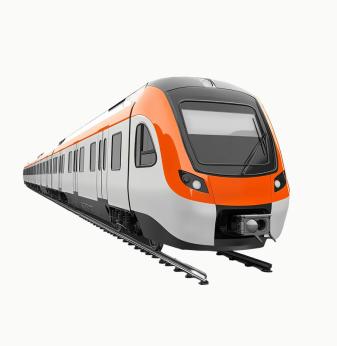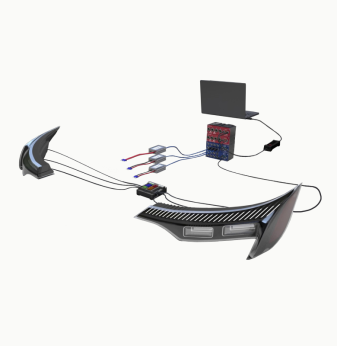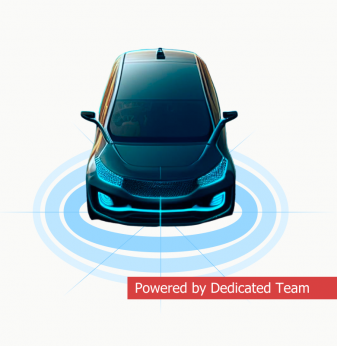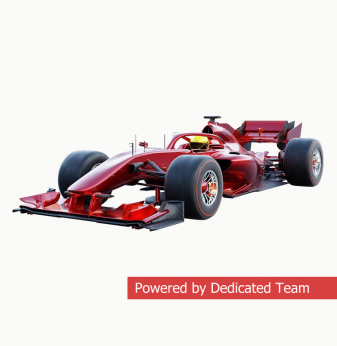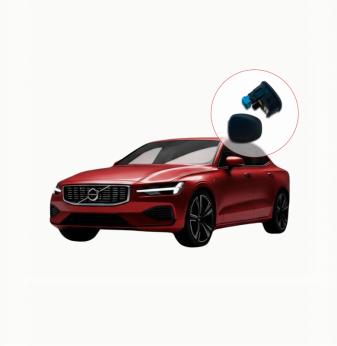How AUTOSAR Classic and Adaptive Platforms Simplify Software Development for Vehicle ECUs
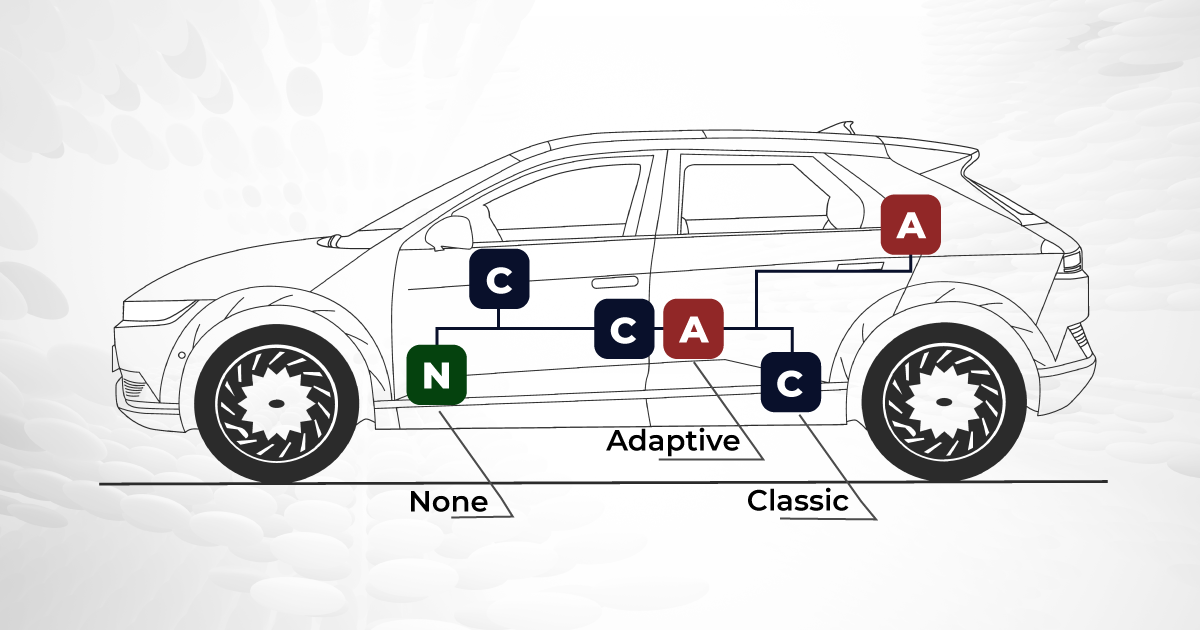
Table of contents
Classic Autosar & Adaptive Autosar: What Is the Difference?
AUTOSAR Compliance for Software Stacks: Development vs Purchase of Standardised Modules
Case Studies: AUTOSAR Software Development
Before AUTOSAR appeared in 2003, OEMs produced software for electronic control units (ECUs) on their customised platforms. There was no unified standard, so hardware manufacturers and software developers were mutually dependent – they could not easily and quickly switch from one platform to another. This problem required a solution – a common approach to software architecture, hardware platforms and development standards. And AUTOSAR became such a solution.
AUTOSAR (AUTomotive Open System ARchitecture) is a global partnership of automotive industry participants to standardise development processes. This standard avoids the re-development of ECUs for identical automotive applications.
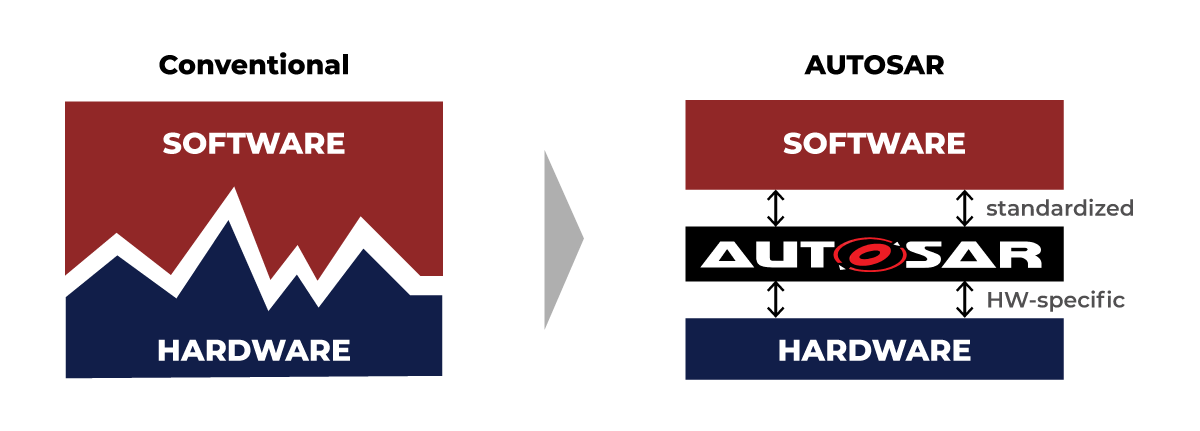
The transition from a solid bundle of software & hardware to AUTOSAR architecture layers
Previously, hardware and software were a single structure, but now developers implement three AUTOSAR architecture layers:
- The AUTOSAR application layer implements the functionality required by a vehicle or system.
- The AUTOSAR RTE layer is an intermediary between software and hardware layers – it contains a standardised set of libraries, services and modules independent of the hardware platform.
- The BSW is a basic software layer that contains AUTOSAR MCAL, ECU abstraction layer, complex drivers, and services layer.
With AUTOSAR software development, automotive industry players can rely on standardised software architectures, interfaces and methodologies. The compatibility of different building blocks and their scalability reduces development effort and enables seamless integration of software components from other suppliers.
Vehicle manufacturers can select and integrate AUTOSAR-compliant software components from various suppliers, ensuring compatibility and consistent behaviour across different car models. AUTOSAR software complies with the ISO 26262 functional safety standard and enables safe code development for all ASIL levels.
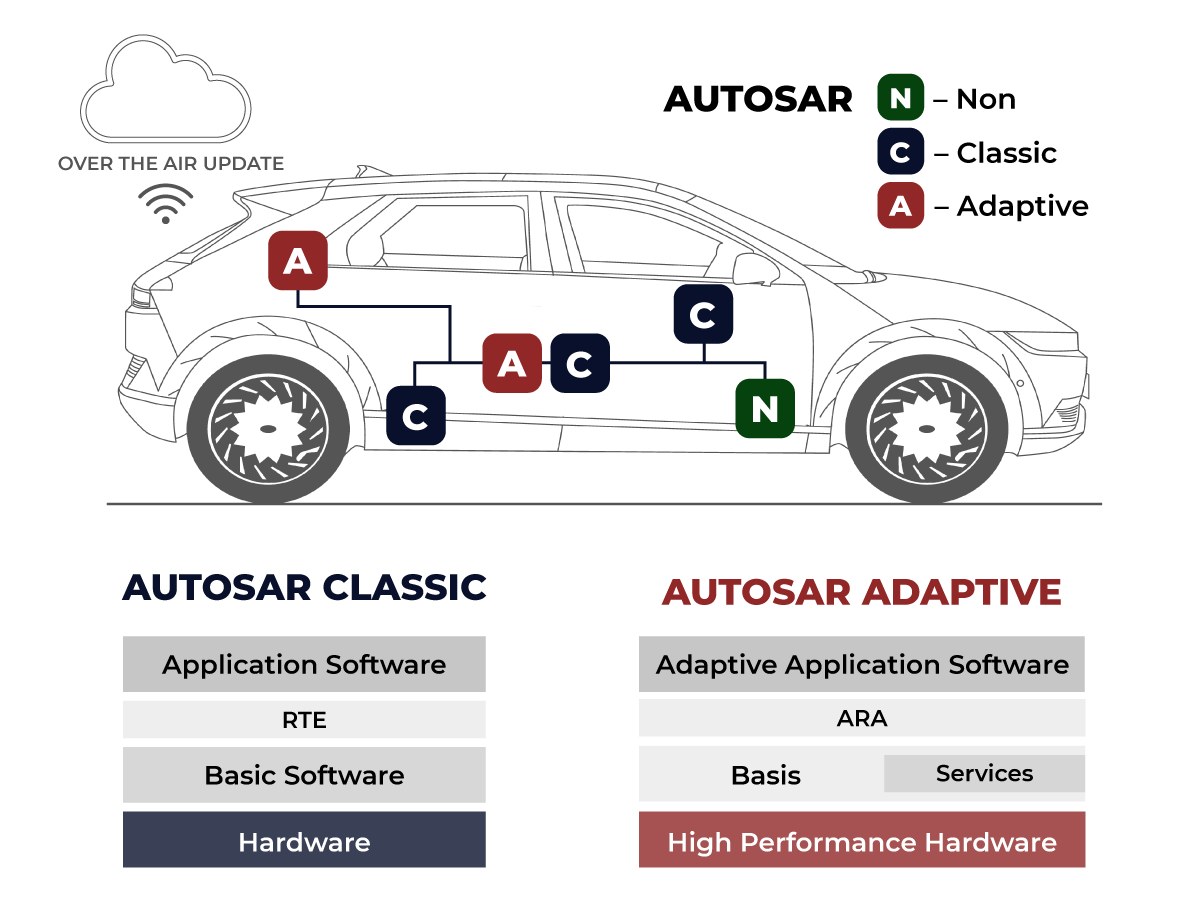
Classic Autosar & Adaptive Autosar: What Is the Difference?
The classic AUTOSAR platform was designed to create distributed embedded systems with high requirements for predictability and security.
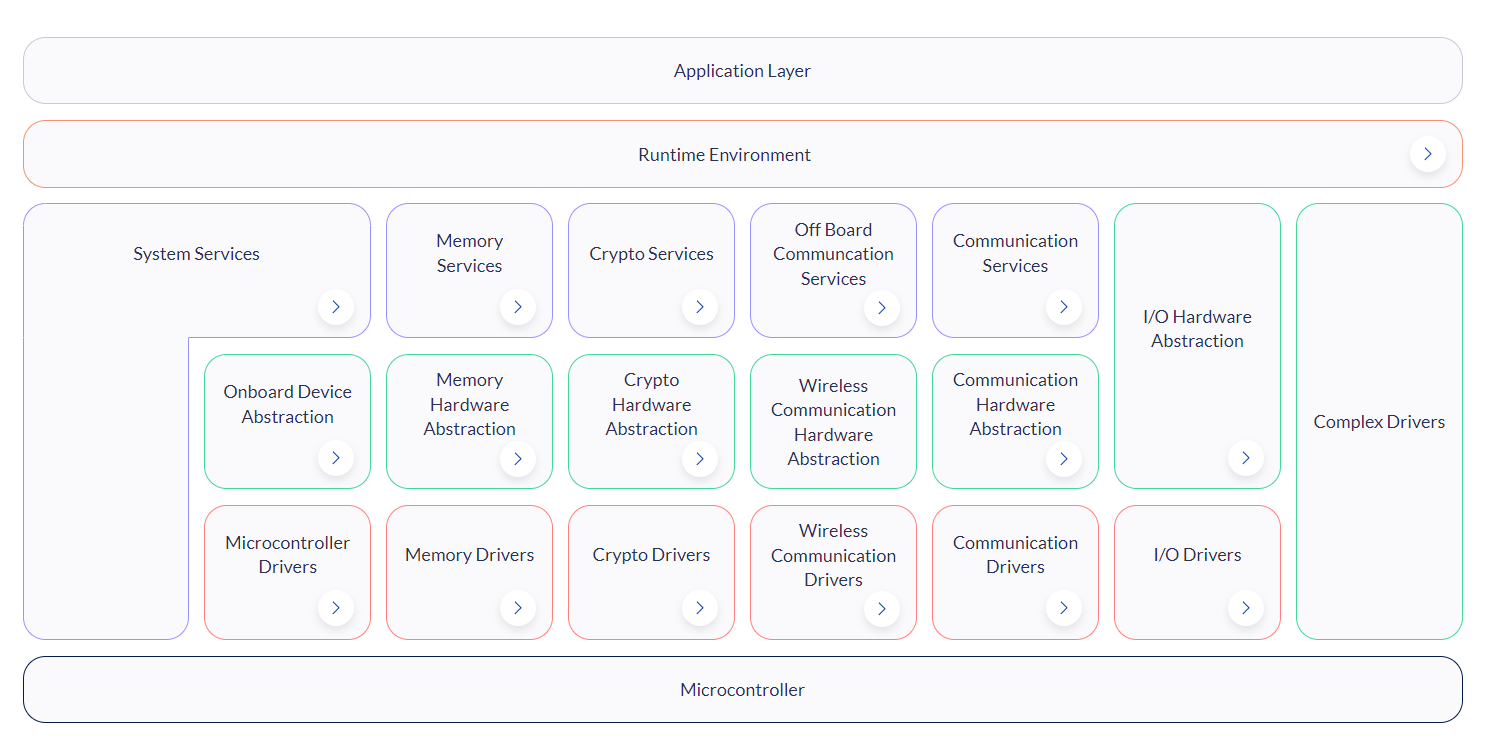
The latest classic AUTOSAR platform architecture (August 2023). Source: autosar.org
The Adaptive AUTOSAR platform was designed for connected and autonomous vehicles with OTA update function. The platform supports the C++ language and focuses on creating a flexible and scalable software architecture for computing platforms.
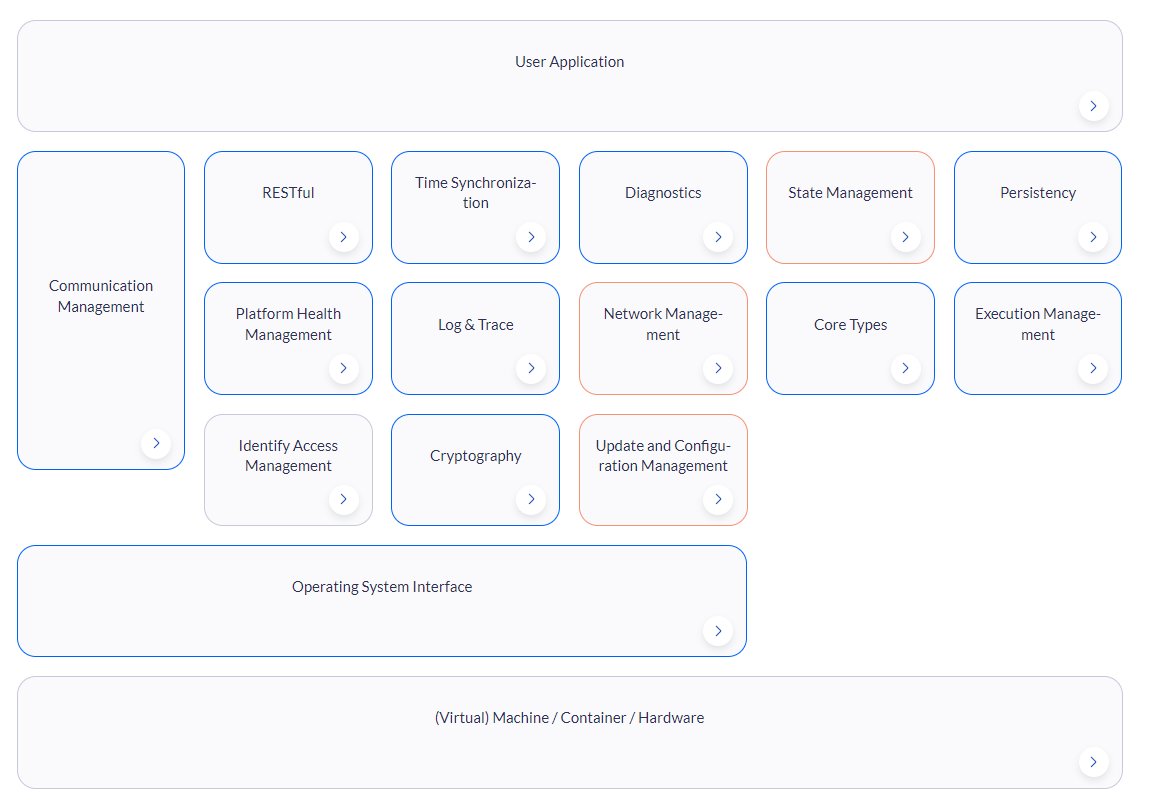
The current adaptive AUTOSAR architecture (August 2023). Source: autosar.org
AUTOSAR Compliance for Software Stacks: Development vs Purchase of Standardised Modules
The AUTOSAR specification is open, so you can develop automotive software in-house. However, in terms of time and money, it is often more cost-effective to buy ready-made AUTOSAR-compliant software modules, and then customise and integrate them. And this is why:
- AUTOSAR specification is very voluminous. It contains many rules and interfaces that must be definitely taken into account during development — all this can increase development time.
- For AUTOSAR development, product certification is required: you must prove that all stack components are developed by the specification and support obligatory requirements.
Due to standardisation, the AUTOSAR stacks can be adapted to any hardware platform. There are a variety of certified vendor companies that provide their software stacks and ensure their AUTOSAR compliance.
The ready-made stacks include the components and modules to speed up the development of AUTOSAR-compliant software. Such stacks are tested and certified; the only thing left to do is to adapt them to the required controller. This approach speeds up the development process and ensures the finished solution complies with the AUTOSAR standard.
One of the major suppliers of ready-made stacks, which we use for working with client projects, is Vector. This German company provides platforms, tools and software components for developing embedded systems and AUTOSAR Adaptive applications for various industries: automotive, healthcare, industry 4.0, and avionics. Vector develops software solutions based on the AUTOSAR Classic and AUTOSAR Adaptive architectures, certified up to ASIL-D.
Case Studies: AUTOSAR Software Development
As we see in practice, companies use three scenarios to get AUTOSAR-compliant software:
- Development of custom AUTOSAR stacks for specific projects and integration with hardware.
- Development of AUTOSAR components.
- Integration of ready-made stacks.
Below we will share our experiences with AUTOSAR projects.
Case Study #1: Development of Software Components in Accordance with AUTOSAR
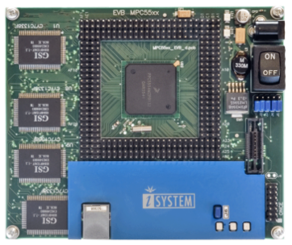
Commissioned by a European car manufacturer, we developed a software platform using AUTOSAR and MISRA standards. Our solution was implemented in a touchscreen dashboard with the following hardware and software components:
- MPC5554 CPU
- 1st and 2nd-stage boot loader design
- Memory interface
- Non-volatile manager
- Internal + external flash driver
- RAM and ROM test suite
Case Study #2: Autosar Software Architecture for the Security Subsystem
Commissioned by a European client, we developed the software architecture for an electric car platform and ensured its AUTOSAR functional safety and compliance. Our development team verified the source code of the project firmware to ensure the ASIL-C functional safety for STM microcontrollers.
We used Rational Doors software as a requirements database and Enterprise Architect (EA) software as our documentation system.
Summing Up
AUTOSAR software development ensures scalability and compatibility of different software components. Moreover, this standard supports the requirements of ISO 26262, which guarantees the functional safety of the developed software.
Suppliers can independently develop AUTOSAR software, but it must be certified, which slows down the product's market launch. It is much faster and easier to buy standardised compliant stacks and integrate them into your project.
Promwad engineers are experienced in working with different variants of AUTOSAR software: they develop separate components and work with custom and standardised stacks.
Contact us if you need AUTOSAR application development for your project.

